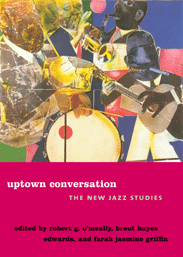
Iyer asks how an improvised solo can convey meaning or “tell a story.” He develops a theory of jazz improvisation around his idea of hearing the body. To Iyer, the effectiveness of improvisation, particularly its rhythmic aspect, depends on an awareness by producers and listeners of the physical actions involved and their situation within a shared social environment, which creates a cascade of meaningful events in an “exploded” (i.e., not conventionally linear) narrative.
Categories
Site Section:
Resource:
Resource Type:
Jazz by Era:
Additional Keywords:
African American culture, bodily motion, book excerpts, improvisation, John Coltrane, kinesthetics, musical personality, narratives, performativity, physicality, sound, speech, storytelling, technique
